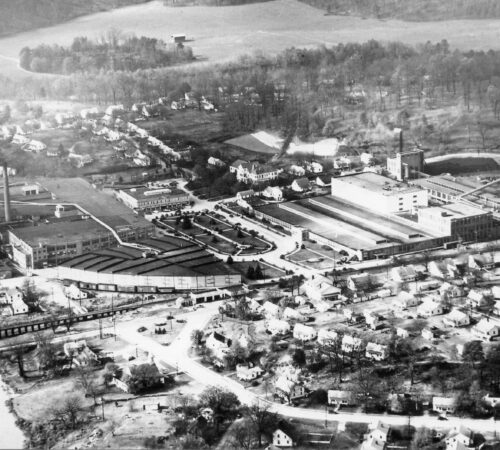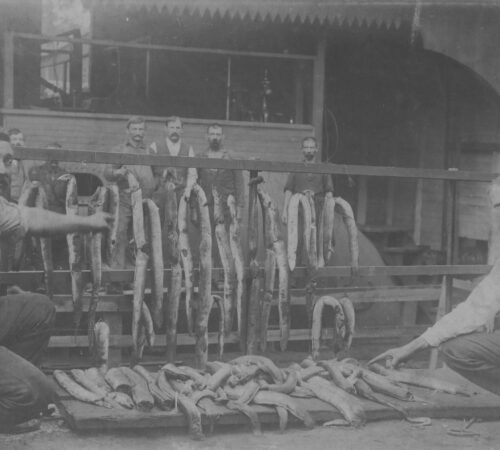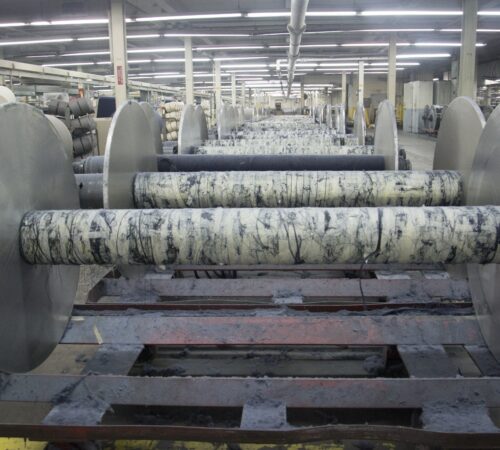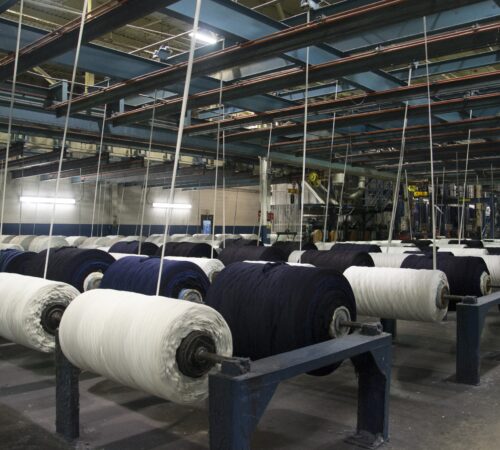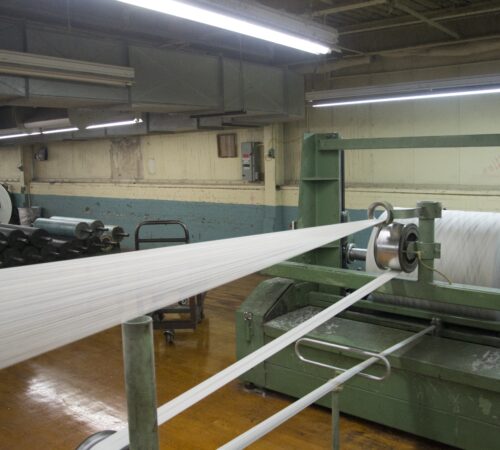Come and visit one of the oldest cotton mills in Georgia!
Visit
Places to See
The following properties are not open to the public, but you can view them from the exterior to learn more about the buildings that supported the textile industry here.
- Trion Manufacturing Company/Mount Vernon Mills and Mill Village, 91 4th Street: This massive facility can be viewed from the street. The historic mill has been expanded several times since its original construction after the 1875 arson attack. By 1935, the mill was a massive facility that operated 102,354 spindles and 2,358 looms and employed 1,600 people. While other mills in the region have declined or collapsed, the Trion mill has thrived and is still operated by Mount Vernon Mills. While the whole town is based around the mill, and therefore basically serves as a mill village, there are certain neighborhoods that feature historic architecture which is consistent with mill villages across the region. The neighborhood directly across the street from the mill makes up a sizeable portion of the historic village. Directly to the south of the mill, across the Chattooga River, another section of the historic village can be viewed.
History
Incorporated in 1869, the textile industry in Trion began with the first cotton mill in northwest Georgia, Trion Factory, in 1847. The original mill included 600 spindles and employed 40 people to produce yarn and osnaburg sacks for the local wheat crops.
During the Civil War, Trion Factory had a contract with the Confederacy to manufacture coarse woolens for the soldiers. Spared from the destruction of the war, Trion Factory later burned in 1875 possibly due to an arsonist. Forming a new company, Trion Manufacturing Company, the mill owner constructed a new two-story brick building and began producing indigo denim. In 1889, the company added a second mill and a third mill in 1900.
By 1912, the mills belonging to the Trion Manufacturing Company were in decline. Benjamin D. Riegel, a New York businessman, purchased the mills and renamed the company Trion Company. Both the mill and the town prospered during this period. In 1931, a glove mill employing over 900 young girls opened prompting the building of Leila Riegel Hall in 1934, a dormitory to accommodate any single girls working for the company. Later the building became the Trion Inn.
In 1934, the plant closed for a third time in its history due to the General Textile Strike of 1934. “Flying Squadrons” of union activists, traveled to Trion to encourage other textile workers to join them. Met with violence from local authorities, on September 5, a deputy opened fire on two strikers. In Trion at least 22 people died or received injuries during the strikes. The mill remained closed for six weeks.
Presented with the prestigious Army-Navy E Award in 1943, Trion Company and its employees produced 50 million yards of herringbone for use in making fighting uniforms, 4 million yards of tent twill, and over 7.5 million yards of material for gun patches, during World War II. The Glove Mill also produced over 7.5 million dozen gloves for the armed forces.
In the late 1940s, the Trion Company and Ware Shoals Manufacturing Company became Riegel Textile Corporation. Various machinery upgrades and mill expansions are made through the 1950s and 60s. In 1971, the mill began producing denim fabrics.
Unlike other textile mills, Mount Vernon Mills business was still steady in the 1970s and 1980s. In 1985, R. B. Pamplin Sr., owner of Mount Vernon Mills purchased the Riegel Textile Corporation. In 1991, the company modernized and still produces over a million yards of denim a day as of 2015.
Charter Trail Members
Resources to Explore
Click on the following links to learn more about this region.
- Facts for Kids
- Digital Library of Georgia
- Georgia Archives Virtual Vault
- Georgia Historical Society
- Chattooga County, New Georgia Encyclopedia
Back to Community List
Email the Trail at wgtht@westga.edu or visit our Contact Us page for more information.
